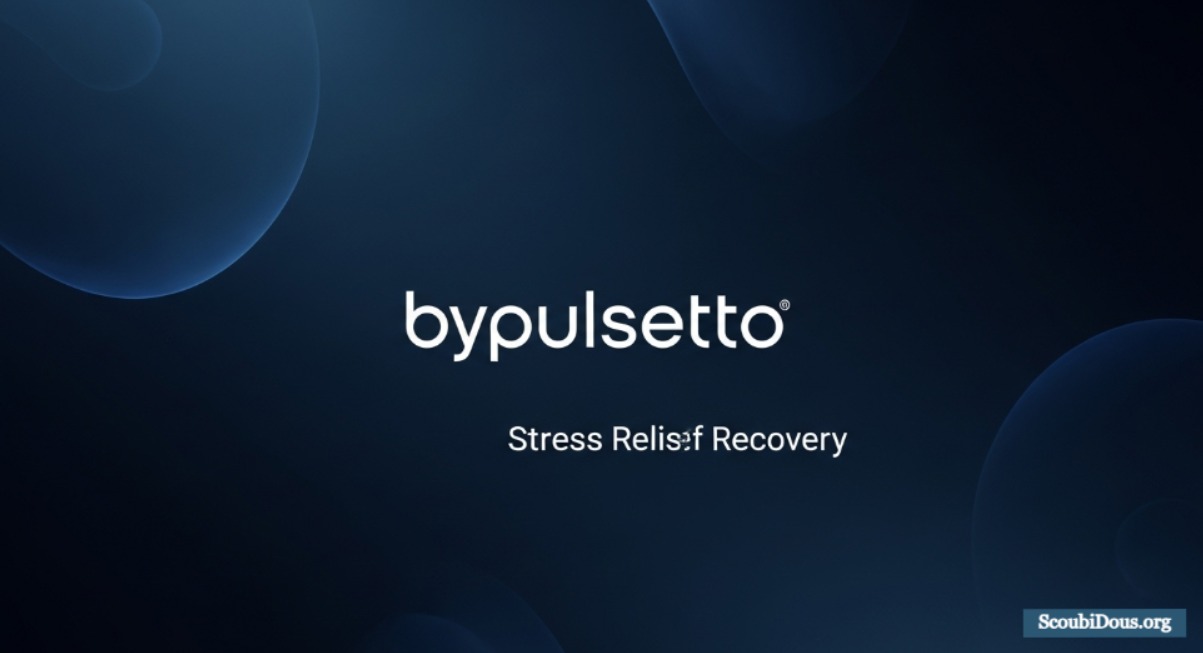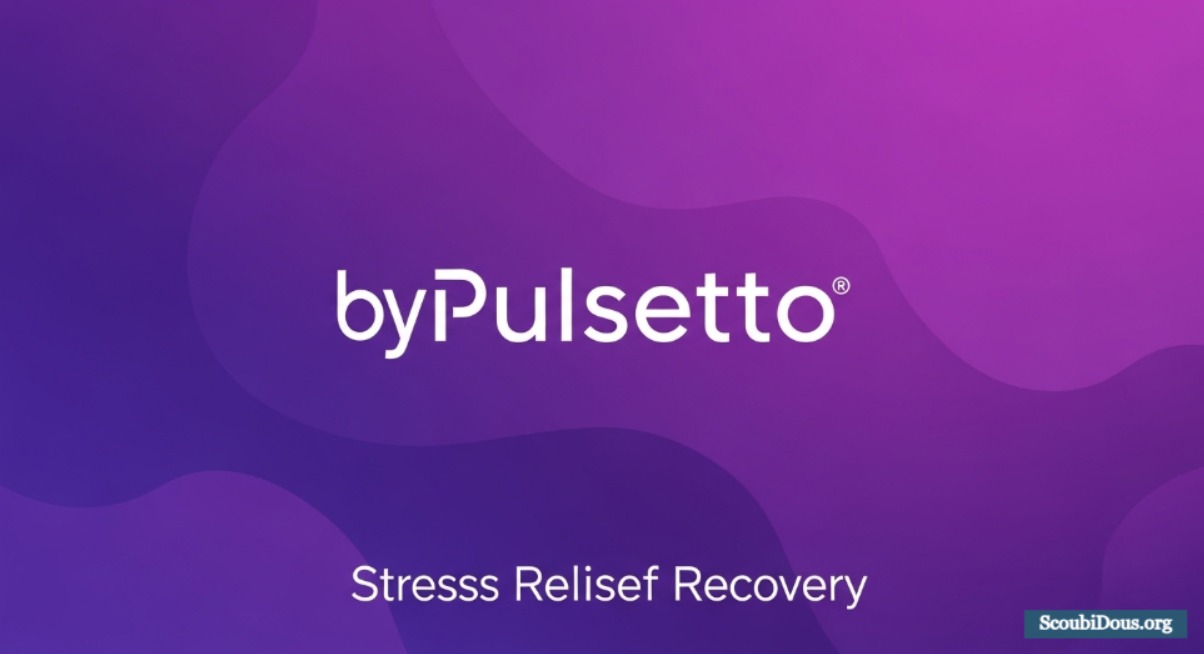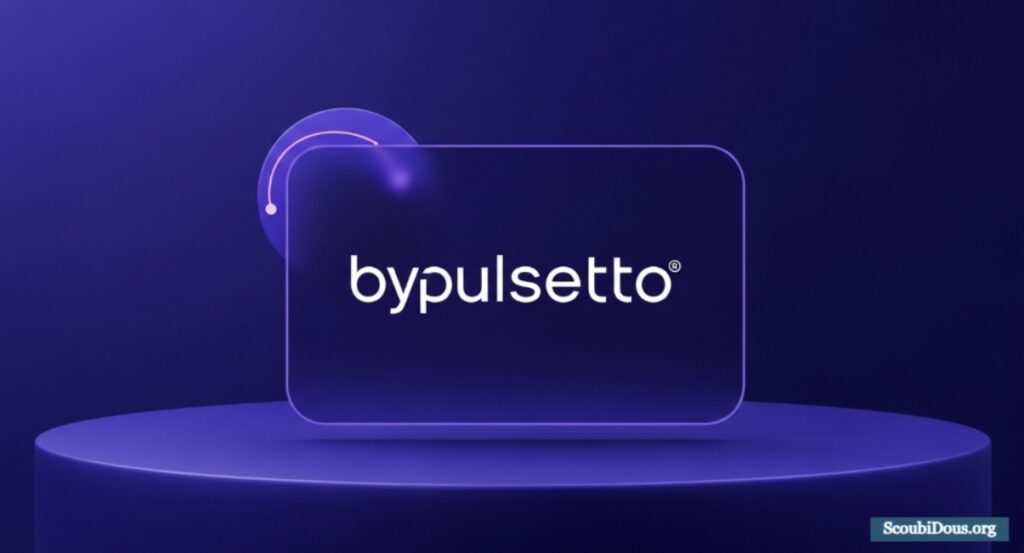Introduction
Imagine if, in just a few minutes a day, you could tap a button on a wearable and trigger your body to shift from stress mode toward calm — without drugs, without complicated routines, only through gentle electrical pulses. That’s essentially the vision behind wellness technology byPulsetto.
In an era when stress, sleep problems, and mental fatigue are pervasive, novel bioelectronic and wearable approaches are gaining traction. Pulsetto offers a consumer-oriented device that noninvasively stimulates the vagus nerve, aiming to promote relaxation, improve sleep, and support mental well-being.
Let’s begin by understanding what wellness technology byPulsetto actually is, and how it works.
What Is Wellness Technology byPulsetto?

Pulsetto is a Lithuanian health tech company, founded in 2021, that develops wearable devices for noninvasive vagus nerve stimulation (often abbreviated tVNS). The company markets its wellness device for stress relief, improved sleep, and overall mental recovery.
Their product is part of the emerging domain of bioelectronic medicine — using electrical signals to regulate physiology for therapeutic or wellness aims.
The key strapline often used: it can shift your autonomic balance (sympathetic/parasympathetic) in 4 minutes per session.
Applications & Use Cases of Wellness Technology byPulsetto
What is wellness technology byPulsetto useful for, in practice? Below are potential use cases, plausible benefits, and real user impressions.
Stress Management & Mood Regulation
One of the core use cases is helping users shift from a stressed, overactivated state toward a calmer baseline. Potential benefits:
- Reduction in subjective tension, irritability, or nervousness
- Improved emotional regulation (less reactivity)
- Supporting recovery after mentally taxing tasks
Because Pulsetto sessions are relatively short (often under 10 minutes), they may act as “reset breaks” akin to micro-meditation.
Sleep Quality & Pre-Bed Routine
Many users use Pulsetto before bed, aiming to relax the nervous system and facilitate falling asleep. Possible benefits:
- Quicker sleep onset
- Deeper, more stable sleep (less fragmentation)
- Improved morning refreshment, if autonomic balance is better
However, the evidence for sleep enhancement is less robust in published trials — outcome may vary between users.
Focus, Recovery & Cognitive Reset
In high-stress or cognitive load environments, a short Pulsetto session might help reset focus or reduce mental fatigue. Use cases could include:
- Mid-afternoon “reset” in work or study routines
- Post-meeting decompress
- During periods of burnout or mental overload
Again, the benefit might be subjective (feeling clearer) as much as measurable.
Wellness & Adjunctive Support
Wellness technology byPulsetto is not presented as a medical treatment but as a tool in a broader wellness protocol. It could complement:
- Mindfulness, meditation, or breathing practices
- Sleep hygiene interventions
- Physical recovery protocols (like cold therapy, stretching)
- Mental health care (though not substituting therapy)
Real-User Reports & Feedback
From user reviews and app store feedback:
- Many users praise the device’s potential and derive subjective calm from the “forced pause” it enforces.
- Some users report frustration with technical issues (app connectivity, subscription status, device activation).
- Some mention inconsistent performance or limited perceivable effect unless intensity is high (which can introduce side effects).
- App ratings are high (4.8/5 in one listing), though reviews mention issues with customer support and firmware glitches.
Example Scenario
Case: A knowledge worker has high stress, irregular sleep, and mental fatigue. They use Pulsetto:
- In the evening before bedtime, run a 5-minute Pulsetto session at moderate intensity
- Then follow a sleep routine (low light, no screens)
- In mid-afternoon, after hours of cognitive load, use a shorter “reset” session
- Track subjective metrics: mood, calmness, sleep latency, morning refresh
After several weeks, the user may notice improved relaxing capacity, but effect size likely will vary.
Benefits, Risks & Best Practices
To adopt wellness technology byPulsetto wisely, one should understand what it can do, what the risks are, and how to optimize its use.
Potential Benefits (What It Can Offer)
- A non-pharmacological option for stress relief
- Convenience of use at home or work
- Potential enhancement of autonomic balance (if effective)
- Short session times make it feasible in busy lives
- A tool that complements other wellness modalities
Risks, Side Effects & Contraindications
Reported side effects and limitations include:
- Dizziness, lightheadedness especially at higher intensities
- Local discomfort or tingling / pain near electrode site
- Muscle twitching or facial contractions if pulses stray
- Transient disorientation / wooziness in some users
- Possibility of no perceivable effect for some users
Contraindications or cautions may include:
- Implanted electronic medical devices (e.g., pacemakers)
- Epilepsy or seizure disorders
- Severe cardiovascular or autonomic disorders
- Neck injury or vascular fragility
- Pregnancy (in absence of safety data)
Because Pulsetto is a wellness device, not a regulated medical device, users should proceed with caution, ideally after consulting healthcare professionals if they have health concerns.
Best Practices for Using Wellness Technology byPulsetto
To maximize benefit and minimize risk, consider:
- Start Low, Go Slow
Begin with minimal intensity and gradually increase as tolerated.
- Short and Consistent Use
Regular, consistent sessions (e.g., daily) likely beat sporadic heavy use.
- Track Outcomes
Maintain a log: stress ratings, sleep metrics, side effects.
- Pair with Complementary Practices
Deep breathing, mindfulness, and gentle movement can amplify effects.
- Avoid Use in Unsafe Situations
Don’t use while driving, operating heavy machinery, or during pregnancy (unless cleared).
- Device Maintenance & Clean Skin
Ensure electrodes are properly placed, skin is clean, and firmware is up to date.
- Take Breaks / Evaluate Response
If adverse effects arise, pause or drop intensity, and reassess.
Implementation Guidelines & Recommendations
If you or an organization consider adopting wellness technology byPulsetto, here are some guidelines, especially to improve the probability of beneficial outcomes.
For Individual Users
- Assess your baseline: your stress, sleep, and autonomic symptoms
- Ensure no strong contraindications (medical conditions, devices)
- Use a structured start protocol (e.g. 2–3 sessions in week 1, low intensity)
- Monitor reactions and side effects closely
- Combine with lifestyle hygiene: sleep, diet, movement, stress management
- Take a break or pause if adverse outcomes emerge
For Clinicians or Wellness Programs
- Use Pulsetto as adjunct tool, not replacement of therapy
- If integrating in a controlled trial, include control/sham arms
- Collect physiological markers (HRV, blood pressure) and subjective scales
- Favor gradual ramping protocols to optimize tolerability
- Educate users clearly about limitations and contraindications
For Developers / Researchers
- Publish open data and case studies to build credibility
- Explore adaptive protocols (closed-loop feedback) to personalize stimulation
- Conduct longer-term trials to examine durability of benefits
- Investigate biomarkers (inflammation, autonomic tone) for objective validation
- Focus on safety, adherence, comfort, and user experience
What Future Holds for Wellness Technology byPulsetto

Looking ahead, what trajectories might Pulsetto and similar technologies follow?
- Clinical Validation & Regulatory Pathways
If Pulsetto or its successors gather randomized controlled trials, they may move into regulated medical device territory for specific indications (e.g., mild depression, stress disorders).
- Adaptive / Closed-Loop Systems
Future devices may monitor physiology (heart rate, HRV, skin conductance) in real time and adapt their stimulation intensity or timing — making them smarter and more personalized.
- Integration with Ecosystems & Wellness Platforms
Linking Pulsetto data with sleep apps, fitness trackers, mental health platforms could create holistic wellness ecosystems.
- Expanded Indications
Beyond stress/sleep, potential domains include pain modulation, inflammatory conditions, digestive regulation, or cognitive enhancement (if validated).
- Lower-Cost Variants & Accessibility
As tech matures, cheaper, lighter, or more accessible versions may emerge for broader markets.
- Health / Wellness Subscription Models
Ongoing service revenue models (firmware updates, guided protocols, analytics) may supplement hardware revenue.
- Competition & Differentiation
To prosper, Pulsetto must expand evidence, usability, credibility, and user support to stay ahead of competing neurostimulation devices.
If Pulsetto can convert early user interest and promise into rigorous evidence, stable user experience, and real-world benefit, it could become a flagship brand in the wellness–bioelectronics frontier.
Conclusion
Wellness technology byPulsetto sits at a compelling intersection: wearable bioelectronic stimulation aimed at improving everyday well-being. It taps into growing interest in nonpharmaceutical approaches to stress, recovery, and autonomic balance.
However, the gap between promise and proven results remains. Reviews show uneven experiences; scientific literature supports the principle of tVNS broadly but device-specific outcomes are still emergent.
Users should adopt with measured expectations, track personal responses, and remain mindful of safety.
For Pulsetto to mature into a trusted brand, it must deliver consistency, publish open evidence, maintain high user support, and continue iterating. If it does, wellness technology byPulsetto may help usher in a new generation of easily accessible bioelectronic health tools.


